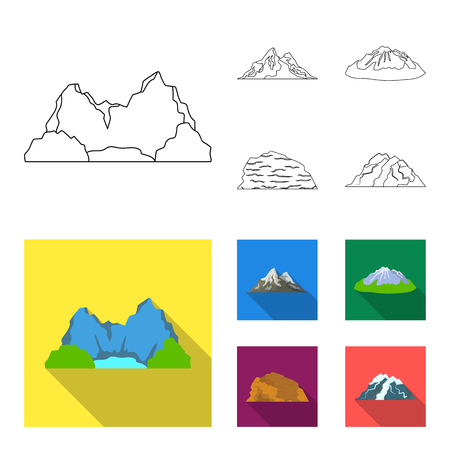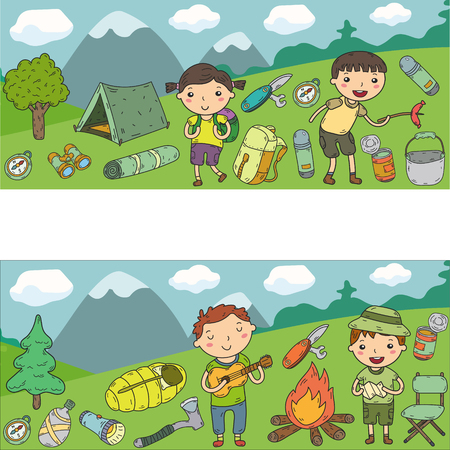1. Consider Group Experience and Fitness Levels
Before hitting the trails with your group or family, it’s important to make sure the hike matches everyone’s abilities. Choosing a trail that works for all ages and fitness levels keeps the adventure fun and safe for everyone. Here’s how you can evaluate your group:
Check Ages and Abilities
If you have young kids, older adults, or anyone new to hiking, opt for easier trails with gentle slopes and plenty of shade. More experienced hikers may be up for something longer or steeper. Make a list of who’s coming and their comfort level with outdoor activities.
Sample Group Evaluation Table
| Name | Age | Hiking Experience | Fitness Level | Notes (e.g., health concerns) |
|---|---|---|---|---|
| Sarah | 8 | Beginner | Average | Loves nature walks |
| Mike | 35 | Intermediate | Good | No special needs |
| Grandpa Joe | 68 | Beginner | Low | Knee issues, prefers flat trails |
| Amy | 16 | Advanced | Excellent | Enjoys challenging hikes |
Match the Trail to Your Group’s Needs
The best trail is one that everyone can finish comfortably. Look for information on trail length, elevation gain, and surface type (like paved, gravel, or rocky). Most American parks—especially state and national parks—list this info online. For mixed groups, choose a loop or out-and-back trail so folks can turn around if needed.
Pro Tip: Use Trail Ratings Wisely
Parks in the U.S. often rate trails as Easy, Moderate, or Difficult. These ratings are great starting points but always check details like distance and estimated time to complete.
2. Assess Trail Difficulty and Length
When picking a hiking trail for your group or family, it’s essential to find a route that matches everyone’s abilities and comfort level. Not all trails are created equal—some have steep climbs, rocky terrain, or long distances that can be challenging for kids, beginners, or those who prefer a more relaxed hike. Here’s how you can make sure the trail you choose will be enjoyable for everyone:
Understand Trail Ratings
Most trails in the U.S. are rated by difficulty: Easy, Moderate, or Difficult. These ratings usually consider both the distance and the elevation gain (how much you’ll climb). Local parks, national forests, and apps like AllTrails often provide this info. Here’s a quick guide:
| Difficulty | Distance (miles) | Elevation Gain (feet) | Best For |
|---|---|---|---|
| Easy | Under 3 | Under 500 | Young kids, beginners, casual walkers |
| Moderate | 3-6 | 500-1,000 | Active families, teens, fit adults |
| Difficult | Over 6 | Over 1,000 | Experienced hikers, adventurous groups |
Check Elevation Gain and Terrain Type
A trail’s distance isn’t the only thing that matters—elevation gain can make a short hike feel much harder. Look for information on whether the trail is flat, rolling, or steep. Also, consider the terrain: wide gravel paths are easier than narrow, rocky ones.
Pro Tip: Consider Everyone’s Comfort Level
If your group includes young children or folks new to hiking, stick with shorter distances and minimal elevation gain. Remember that group hikes move at the pace of the slowest member—choose a trail where everyone can enjoy themselves without feeling rushed or overwhelmed.
Questions to Ask Before You Go:
- How far do we want to hike?
- Are there any steep sections?
- Is the path well-marked and maintained?
- Does anyone in our group have special needs (like strollers or mobility challenges)?
Taking time to match the trail’s difficulty and length to your group means more smiles and fewer sore feet on your outdoor adventure!

3. Prioritize Family-Friendly Features
When hiking with groups or families, especially those with kids or beginners, choosing a trail that offers family-friendly features can make all the difference in your outdoor adventure. Here are some key things to look for:
Accessible Amenities
Start by checking if the trailhead has essential amenities. Trails with parking lots, restrooms, and drinking water stations help make your trip more comfortable and less stressful—especially with little ones in tow.
Clear Signage
Look for trails known for their well-marked paths and clear signs at intersections. Good signage helps everyone stay on track and reduces the risk of getting lost, making the experience worry-free for parents and group leaders alike.
Rest Areas
Frequent rest stops along the trail give everyone a chance to catch their breath, hydrate, or have a snack. Benches, shaded areas, or picnic tables are great spots for taking breaks or enjoying a packed lunch together.
Engaging Points of Interest for Kids
Trails with fun features keep younger hikers engaged and motivated. Look for hikes that pass by streams, ponds, interesting rock formations, or small playgrounds. Educational signs about local plants and animals can also spark curiosity and conversation among kids.
Family-Friendly Trail Features at a Glance
| Feature | Why It Matters |
|---|---|
| Accessible Amenities | Makes logistics easier for groups and families |
| Clear Signage | Keeps everyone on the right path and safe |
| Rest Areas | Provides opportunities to relax and regroup |
| Points of Interest for Kids | Keeps children entertained and excited about hiking |
Selecting a trail with these family-friendly features ensures your group’s hike is enjoyable, safe, and memorable for adventurers of all ages.
4. Check Local Weather and Seasonal Conditions
Before heading out with your group or family, it’s super important to check the latest weather updates and trail conditions. U.S. hiking destinations can have very different climates and seasonal changes depending on where you are—from summer thunderstorms in the Rockies to winter closures in the Sierras. Here’s how you can stay safe and make sure everyone has a great time:
Why Weather Matters for Group Hikes
Weather can change quickly, especially in the mountains or desert regions. Sudden rainstorms, extreme heat, or unexpected snow can all impact safety and enjoyment. For families with kids or groups with varied experience levels, choosing the right trail based on current weather is key.
Common Seasonal Closures Across the U.S.
| Region | Typical Closures/Conditions | When to Watch Out |
|---|---|---|
| Rocky Mountains (CO, MT, WY) | Snowpack, avalanche risk, late spring melt | Late fall to early summer |
| Pacific Northwest (WA, OR) | Muddy trails, landslides, heavy rain | Winter through early spring |
| Southwest (AZ, UT) | Extreme heat, flash floods in slot canyons | Summer monsoon season (July-Sept) |
| Sierra Nevada (CA) | Snow closures, wildfire risk | Winter for snow; late summer/fall for fires |
| Northeast (NY, NH, ME) | Mud season, icy trails | Early spring and late fall/winter |
How to Stay Informed
- Check official websites: National Park Service, U.S. Forest Service, or state park sites provide up-to-date alerts about trail closures or hazards.
- Use local weather apps: Apps like Weather Underground or NOAA give real-time forecasts for specific trailheads.
- Call ahead: If you’re unsure about conditions, call ranger stations for firsthand info.
- Look for recent trail reports: Many hiking communities post updates online about mud, downed trees, or washed-out bridges.
Packing Tips for Unpredictable Weather
- Ponchos or lightweight rain jackets for everyone in your group.
- Extra dry socks—kids especially love puddles!
- A backup plan: Know where to go if storms roll in fast.
If you keep an eye on local weather and seasonal changes before your hike, you’ll help ensure a safe and fun adventure for every member of your group or family—even if Mother Nature throws a curveball!
5. Explore Community Resources and Reviews
When choosing the perfect hiking trail for groups and families, tapping into community resources and online reviews can make a world of difference. By checking reputable sources, you’ll get up-to-date trail conditions, safety tips, and real experiences from fellow hikers.
Trusted Sources for Trail Information
| Resource | What It Offers |
|---|---|
| National Park Service (NPS) | Official info on national park trails, safety updates, closures, and family-friendly recommendations |
| AllTrails | User-submitted reviews, photos, difficulty ratings, and route maps for thousands of trails across the U.S. |
| Local Hiking Clubs | Insider tips on local trails, group hikes, and community events; great way to connect with experienced hikers in your area |
Why Reviews Matter for Families and Groups
Reviews from other hikers often highlight important details—like whether a trail is stroller-friendly, has shaded picnic spots, or offers kid-friendly features like creeks or wildlife viewing. Reading recent reviews can alert you to muddy conditions, tricky sections, or changes in trail access that could affect your group’s experience.
Tips for Using Online Reviews Effectively
- Filter by recent posts: Trail conditions can change quickly with weather or maintenance work.
- Look for family-focused feedback: Many reviewers mention if a trail worked well for kids or larger groups.
- Check for seasonal advice: Some trails are best in spring or fall; others may be too hot or buggy during summer months.
Get Involved Locally
If you want extra support or recommendations, consider joining a local hiking club. These communities often organize group outings and can suggest lesser-known trails perfect for all ages and abilities. Plus, it’s a fun way to meet new friends who love the outdoors as much as you do!


